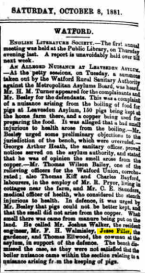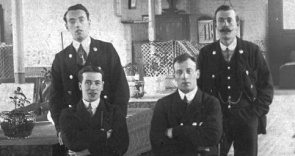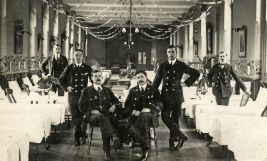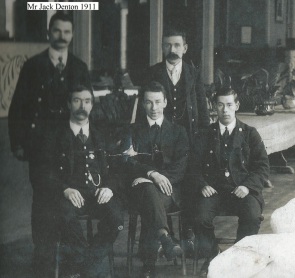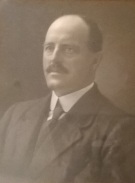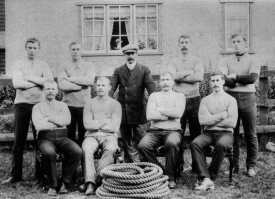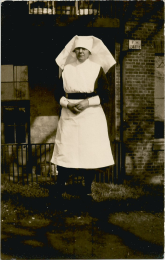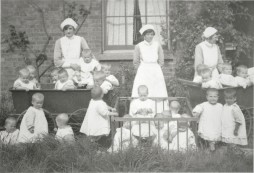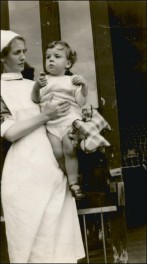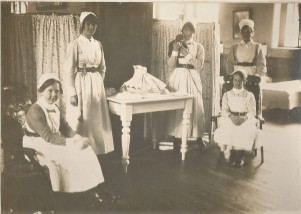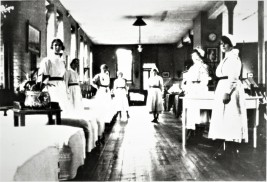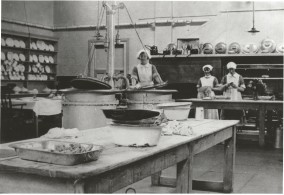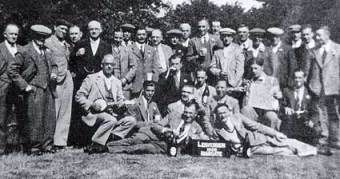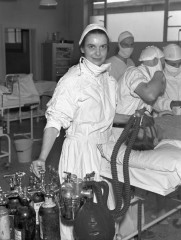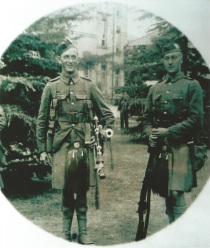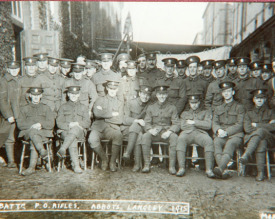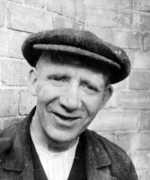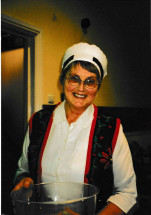
The Staff
From its opening on October 1st 1870 to its closing in October of 1995 the Leavesden Asylum/Hospital and its associated facilities relied on a work force of from 240 Doctors, nurses, support staff and volunteers in 1870 to a staff of 3500 in the 1950s to give care to the thousands and thousands of inmates (term used from 1870 to 1932) patients ( term used from 1932 to 1950s) and residents (term used from 1950s to 1990s who passed through their doors in need of help during the 127 years of the facilities operation. Many of these individuals gave much of their time and energies to help improve the lives of so many who had so little. Their acts of caring were truly heroic.
These are just a few of them.
Jesse William Filler, was a Gardener at Leavesden Asylum (as it was then known) in the 1880s and 1890s. I can tell you the little that I know, but I wondered whether you have any information from that time?
Jesse William Filler was born in Sandridge in 1848. He married Isabella Hutchinson and they moved to Leavedsen where they raised a family of nine children. The 1891 census shows him living at Ganders Ash with the occupation "Gardener". Anecdotal accounts passed down through the family say that he managed several under-gardeners. Amongst other things they grew peaches and on occasions he would come home and pull one from his pocket!
An article in the Herts Advertiser 8/10/1881 refers to a court case involving the Asylum in which Jesse was called to give evidence. It was a trivial case but gives a small picture of life. Neighbours had been complaining about smells that they believed to be emanating from the boiling of food to be given to pigs on the estate. Jesse testified that he had caused the smell by spreading manure on the gardens. Apparently that was deemed OK and the case dismissed. The case was also reported in several other local papers - some with blow by blow accounts of what was said. Grief!!!!
When Jesse retired he was given a rather fine silver plated fish slice. I have it now, but there is no inscription. It is sadly in need of restoration.
Submitted on 13 December 2021, by Mike Atkinson, Great Grandson of Jesse Willaim Filler.
Below is copy of the article which appeared in the Herts Advertiser and St Albans newspaper on the 8th of October 1881. Curtesy of British Newspaper Archive
The 7th (City of London) and the 8th Battalion of the Post Office Rifles, stayed at the Leavesden Asylum from November 1914 to March 1915 on their way to France.
Captain H Peel wrote to his wife about the experience:
“My Darling, I haven’t had a moment to write before. We are more or less settled down here now - we are in the lunatic asylum (Leavesden)! That is to say my company and one other are billeted in the big Recreation Hall of the huge asylum here and we officers are billeted on the superintendent Doctor Elkins. All around us are 2,200 incurable lunatics - a most cheerful atmosphere. I’ve been round with the Doctor looking at them this afternoon, and anything more depressing cannot be imagined. Really, the billet is quite a good one and we are very comfortable and well fed and looked after.”
Information supplied by Mr Phil Draper as posted on www.hertfordshire-genealogy.co.uk.
Henry (Harry) AYRES (1894 – 1969) started working at Leavesden Mental Hospital at the outbreak of the war in Europe in 1939, when he was about 33yrs of age.
He was working at Odhams installing the printing presses when he was made redundant. Unable to join the forces due to a deformed foot, the Labour Exchange who were responsible for all jobs at that time, sent him to work at Leavesden Hospital.
His title as far as I am aware according to my father was Maintenance Engineer which covered everything.
As war started more and more able personnel were called up. The Gardener was called up, so Harry took over his job and 5 patients were assigned to help him maintain the gardens and grounds and vegetable growing areas.
Then the Farm hands were called up and he took over maintaining the farm machinery and now had up to 10 of the patients to assist him with tasks.
As you know the Hospital in 1940 was split in 2 for wounded Canadian Soldiers during the war years. This would have been the Canadian Hospital and later the Kaki University.
Harry was responsible for maintaining all the Hospital equipment in the operating theatres etc.
The Chief Engineer was based at Shenley Hospital, with engineers like Harry also based at Shenley and Radlett.
In 1948 the Army left the Hospital, and the original Home Farm was sold off along with all the animals and equipment and the new NHS took control of the Hospital.
Harry continued to work until he was about 70. He would catch the bus from the Harebreaks to the Hospital wearing his suit and tie and flat cap, swinging his small suitcase in his hand to counterbalance his invalid foot.
Everyone said he was happy working at the Hospital, and it was work he enjoyed.
This story was written by Stephen Ayres, Grandson of Harry Ayres.
23rd of February 2022.
Felicity Firth was a volunteer at the hospital during the 70’s and 80’s and visited patients at the hospital monthly. She joined a group of other volunteers who came from Leavesden All Saints Church on Horseshoe Lane. She and the other volunteers worked in the female wards named Daffodil, Bluebell and Godetia.
Felicity loved her time at the hospital and wrote this poem about her experiences there.
Going Home
“I’m going home tomorrow”. She said.
My Mum’s coming on the train.
She’s taking me home.”
“That’s nice. I answered.
“Have a nice trip.”
“Oh I won’t be coming back .” she clarified.
And into the surrounding mayhem
A pool of silence fell.
I knew she wouldn’t be going home.
Next time she showed me her ring.
“Do you like it? Isn’t it pretty?
We’re getting married soon.
He’s very good looking.”
“That’s good.” I said
“You must be happy.”
There was no fiancé
And the ring looked as if it came from a cracker.
But who was I to shatter her dreams.
It was always the same story
As the years slipped by.
Marriage and going home were never going to happen.
Then one visit she wasn’t there.
“What’s happened to Jean?” I asked a nurse.
“Oh she died dear.”
So I suppose she did go home.
Eventually.

